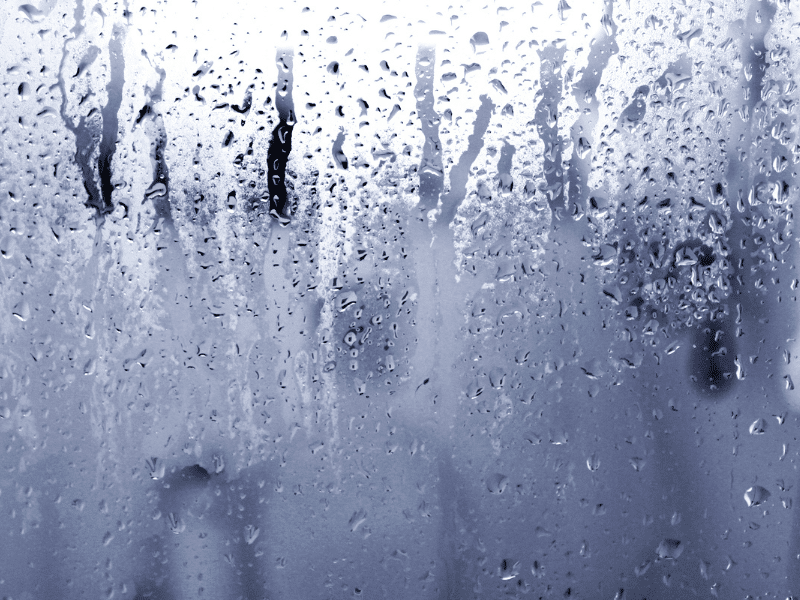Humidity is defined as the percentage of water in the air. Most Australians live with moderate to high outdoor humidity levels. In urban areas, close to the coast (where most of us live) there are very few days during the year when our homes have less than 30% relative humidity. Maintaining our indoor humidity at the right levels plays a key role in our health.
High humidity in the home can increase the prevalence of dust mites and mould, which are two of the most common triggers for asthma and allergies. Low levels of humidity (dry air) can increase our risks of catching airborne viruses like the common cold or flu as well as aggravating dry skin and eczema.
Keeping the right level of humidity in our homes is crucial for our health. To provide a healthy home environment we should aim for humidity levels between 30 – 50%.
Our homes are a haven, a place where we spend most of our time. This means it is extremely important to make our home environment as clean and healthy as we can. Ensuring your home has excellent air quality and ventilation can have a massive effect on the health of everyone in your home and can reduce your risks of a range of health problems.
WHAT CAUSES HUMIDITY?
Australia has an unpredictable climate, with hot, humid summers and cold, dry winters interspersed with downpours of rain at random times throughout the year. Our unique Aussie combination of bush fires, heatwaves, dust storms and flooding also contribute to increased humidity and reduced air quality which in turn affects our health. 1 in 10 Australians suffer from asthma. High humidity in our homes can aggravate asthma and allergies.
As we strive to become more sustainable and introduce energy-saving measures into our homes such as draught-proofing, double glazing and better insulation, we are removing the escape route for humid air. Trapping humid, stale air in our homes reduces the air quality and increases condensation on the walls and windows.
Elevated humidity levels are the most common cause of condensation dampness in our homes. This excess moisture builds up on walls and ceilings which can lead to the growth of moulds, fungi and bacteria which release their spores into the air.
Higher humidity levels also create an increase in dust mites, which thrive in moderate temperatures and humidity levels above 70%.
Exposure to condensation damp, mould growth and dust mites are clinically associated with respiratory problems, allergies, asthma and immunological reactions.
While your health is priceless, it’s important to factor in the financial impacts of high humidity. Condensation can lead to swollen wooden boards, mouldy furniture, curtains and belongings, peeling paint and water stains on your walls. In extreme cases, excessive condensation can cause problems with the structural integrity of your home.
HOW TO PREVENT HUMIDITY?
Depending on where you live, your home may be susceptible to high humidity and condensation. Improving air circulation is a cheap, effective way to reduce the indoor humidity levels in your home. It is not as simple as just opening a window, especially when the outdoor humidity is higher than indoors.
Introducing fresh filtered air and getting the old contaminated air out of your home is key. Correctly ventilating your home can have a massive impact on the humidity levels in your home. A home ventilation system is one of the best ways to remove any asthma and allergy triggers – replacing toxic air with filtered air. For optimal air quality, it is recommended to filter air every four hours.
Effectively managing the humidity in your home has multiple benefits, both to your health and your back pocket. According to the Asthma Foundation, the core issues you must address for an asthma and allergy friendly home are pets, heating and cooling, ventilation, dust/dust mites.
How Do Ventilation Systems Work?
Riteflo provides self-propelled, wind powered ventilation systems for residential and commercial properties. These ventilation systems provide a cost-effective air filtration solution because they are reliant on natural wind and do not use electricity.
Depending on where you install your self-propelled ventilation system, it works by drawing dry and warm air from the roof area and/or outside your premise. It will then filter toxins and dangerous particles from the air such as dust mites, pollens etc. Stale air is driven out of your home and pushed through windowsills and door cracks. Contact Riteflo today for residential and/or commercial ventilation solutions, one of our friendly team members will be more than happy to assist you!


